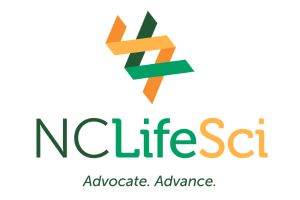Pharmaceutical Prescribing Labels: An Enormous Opportunity to Eliminate Pointless Paper Waste in the United States
This post originally appeared on the website of the Environmental Paper Network.
A serious approach to addressing climate change must include the proactive elimination of unnecessary paper consumption. Paper is an important and useful material that should be produced and consumed in a responsible and sustainable way, and the existence of digital options that can be utilized safely and effectively should lead to the elimination of outdated regulatory or other requirements that mandate the use of paper.
The Internet provided an enormous opportunity to address the over consumption of paper by enabling the digital sharing of information, and updating of that information in real time. This ushered in new and more efficient ways of working and sharing information, and a greater awareness of where wasteful, unnecessary, low-value paper use could be reduced or eliminated, thereby preserving natural resources. But unfortunately, outdated government regulations that pre-date the Internet, requiring the pointless use of paper, remain on the books – in large part due to lobbying by paper industry special interests.
One example pertains to the paper prescribing information that the U.S. Food and Drug Administration continues to require be affixed to every pharmaceutical bottle sent by drug manufacturers to prescribers, e.g., physicians and pharmacists. These are not the labels that we receive as patients when receiving our medicines from pharmacists – though those labels are also increasingly wasteful as they are routinely ignored and discarded. The prescribing information is the paper label in unreadably small fonts, that only prescribers receive, which have been required by the FDA since 1960 and have long outlasted their usefulness to prescribers.
Even more frustrating is that the FDA agrees, as the agency has wanted to move to digital since 2005 but has been blocked by efforts of the paper lobby. In 2014, the FDA published a proposed rule, 79 Fed. Reg. 75506, that would provide for electronic distribution of prescribing information for human prescription drugs and biological products. However, Congress has blocked the FDA from implementing its rule by using the budget appropriations process.
When considering that there are more than three billion prescriptions filled each year and the paper prescribing information sent to prescribers averages 30 pages in length, which is roughly 90 billion sheets of paper, the impact of this waste is significant, according the the Sierra Club and the FDA.
EPN analyzed this waste through our Paper Calculator and the results were stunning. It takes 12,000,000 trees each year to produce these paper prescribing information labels, disturbing 186,000 acres of land – or 141,000 football fields. The greenhouse gas impact is the equivalent of adding 816,000 cars to our roads, year after year. The water consumption required to produce these labels is nearly 11 billion gallons, enough water to operate 7.7 million clothes washers for an entire year.
The leading priority of the EPN’s Global Paper Vision is to reduce global paper consumption and promote fair access to paper. Given that prescribers almost exclusively rely on the digital version of prescribing information to ensure real-time access to updated information, and that paper versions of these labels can be made available upon request, paper prescribing information labels are a gross and unnecessary overconsumption of paper and presents an opportunity to eliminate a significant volume of pointless paper waste.
Note: NCBIO is working with the Alliance to Modernize Prescribing Information to improve patient safety and reduce waste by modernizing pharmaceutical prescribing information used by physicians and pharmacists.
